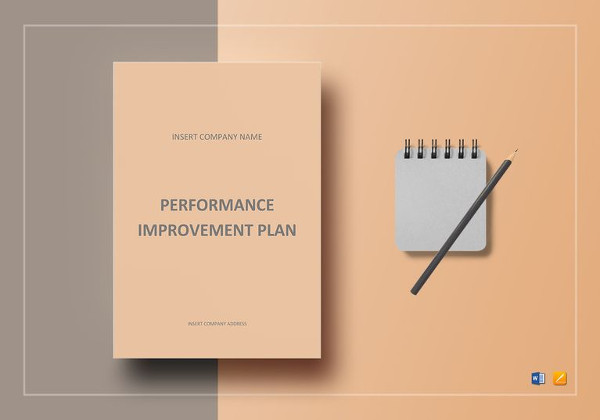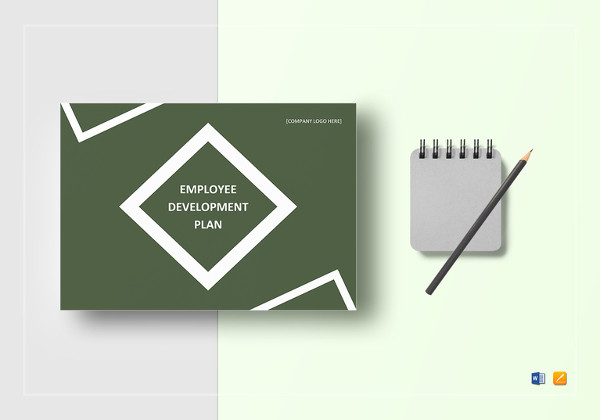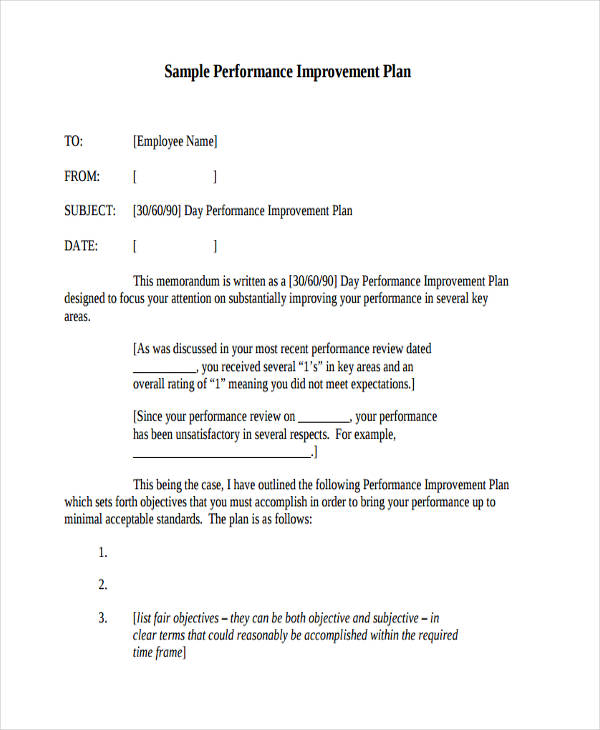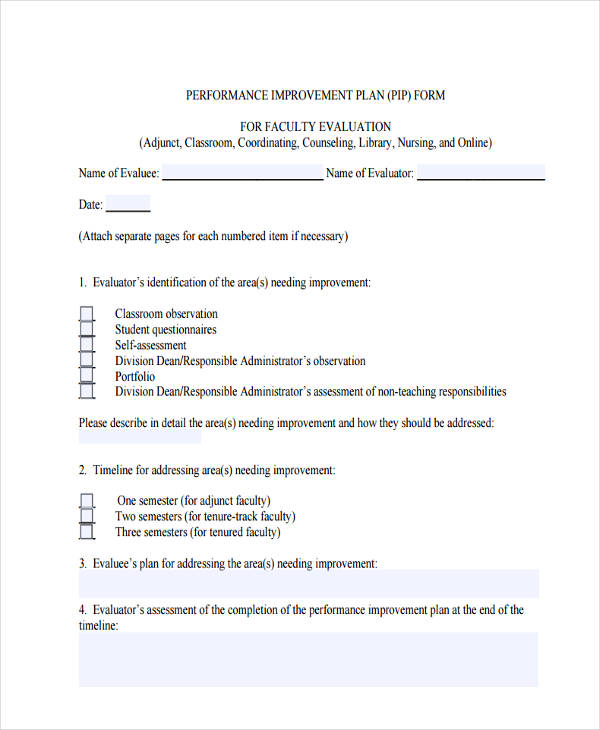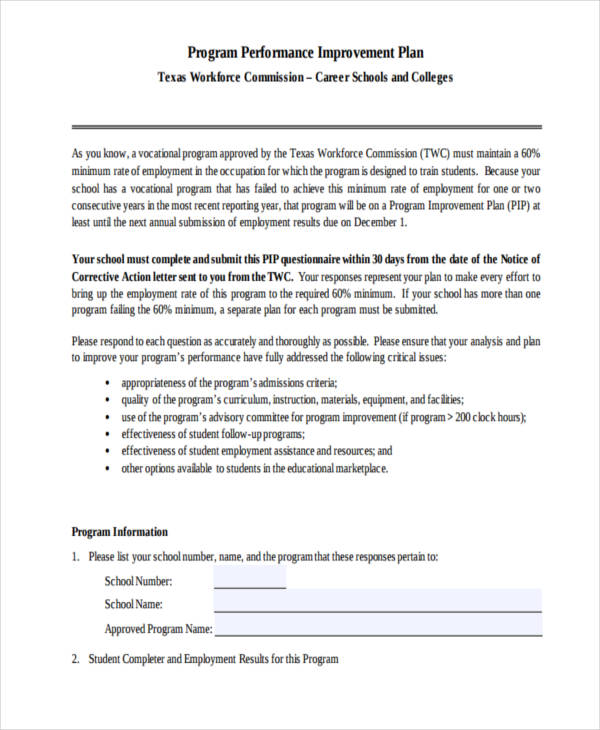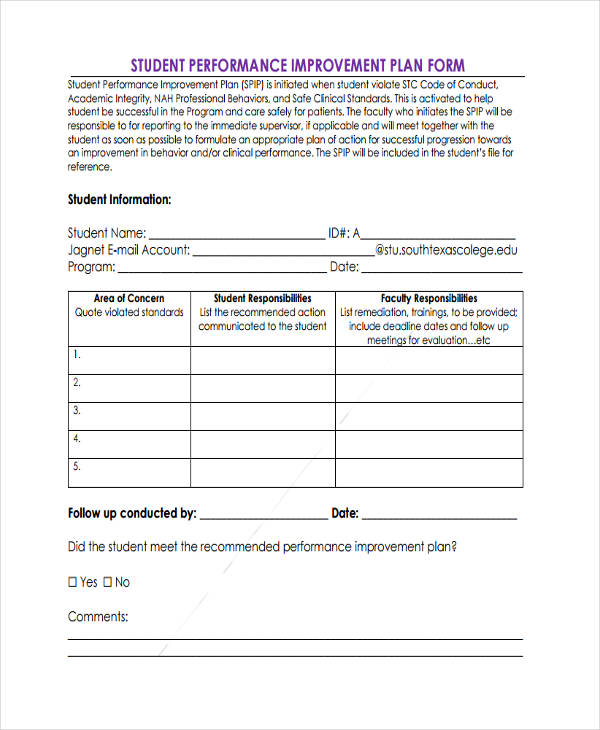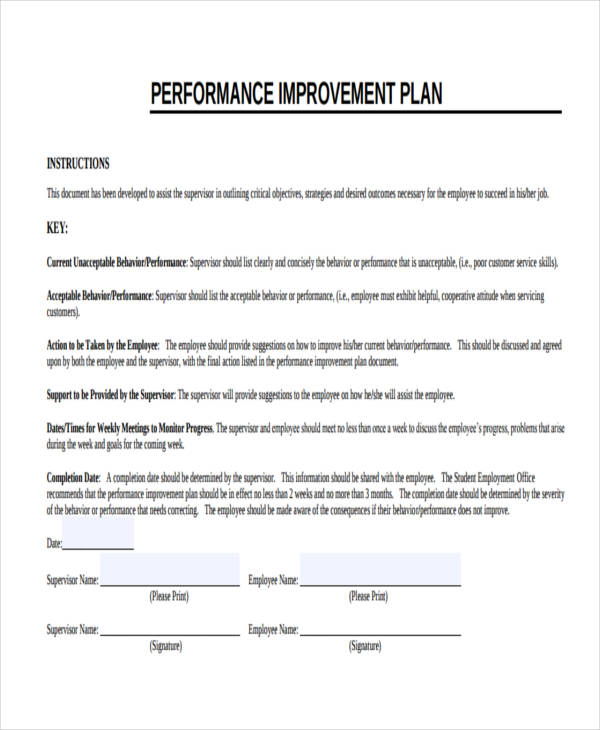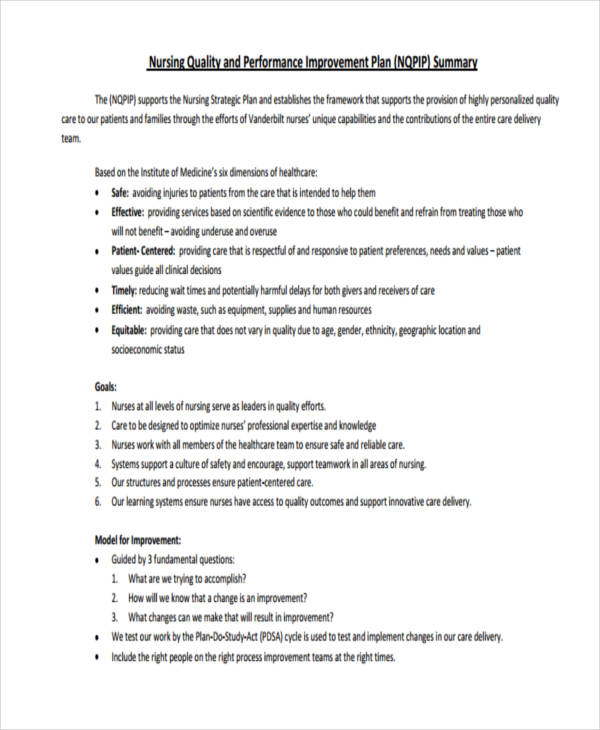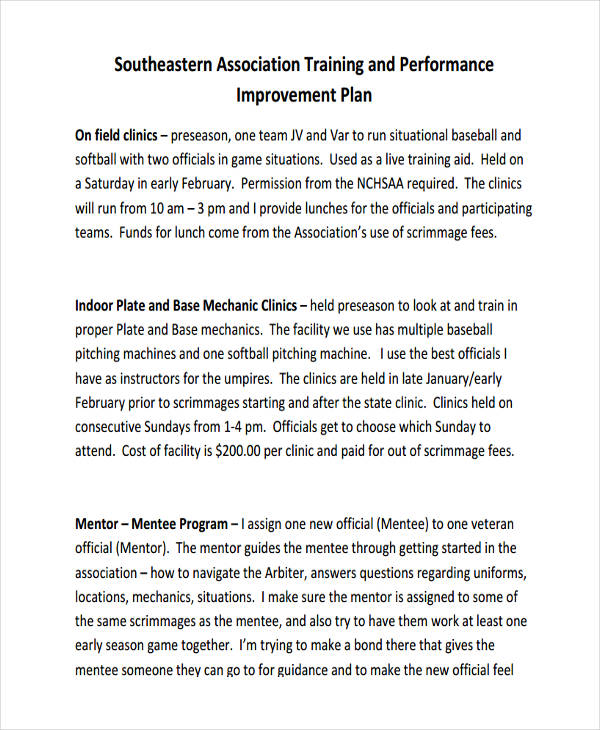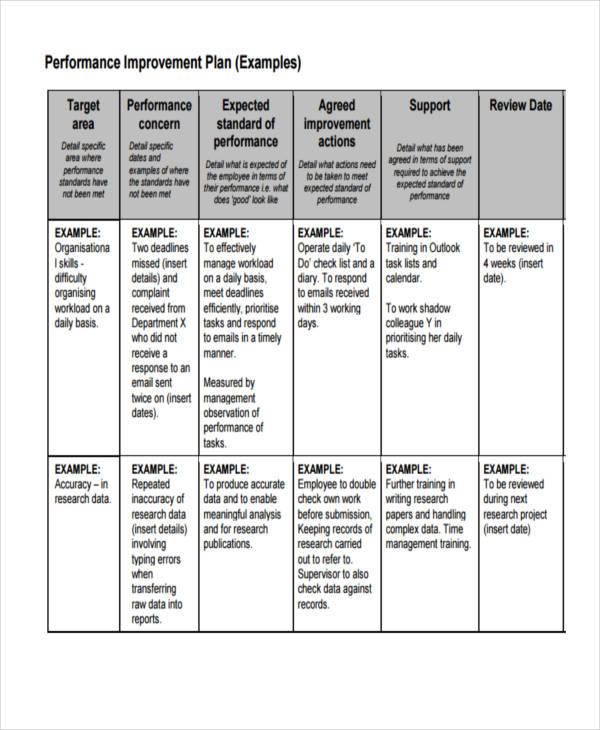14+ Performance Improvement Plan Examples to Download
Plans are thorough proposals or agreements created with the goal of accomplishing something within a certain time frame. In order to arrange the resources and steps required to achieve a certain career objective, plans are often established in advance. Project plans, for example, are intended to guide the activities needed to be done in order to accomplish a certain project. Plans are widely used in the business world. Business owners or employees often make plans in order to achieve a specific business target or goal in mind. For instance, sales plans set long-term goals and target a business wants to achieve, and the necessary steps they need to take in order to accomplish those.
Performance Improvement Plan Template
Performance Development Plan
Employee Development Plan
Business Development Plan
Simple Career Development Plan Template
Employee Performance Improvement Plan
Performance Improvement Action Plan
Blank Performance Improvement Plan
Program Performance Improvement Plan
Student Performance Improvement Plan
Basic Improvement Plan
Nursing Performance Improvement Plan
Quality Improvement Plan
Training Performance Improvement Plan
Performance Improvement Plan Example
What is a Performance Improvement Plan?
A performance improvement plan, also known as a performance action plan, is a plan an employer usually sets out to improve employee performance. Performance improvement plans usually point out an employee’s performance issues and set specific smart goals. It is a formal process used by employers to help employees improve their job performance and meet the required expectations and standards. The plan is designed to outline specific career goals, timelines, and expectations for the employee to follow to address any deficiencies in their task performance report.
The PIP typically begins with a meeting between the employee and their supervisor or manager, where the areas of improvement are identified and discussed under observation. The plan may include specific actions for the employee to take, such as an additional training plan, coaching, or mentoring. It may also include measurable goals and benchmarks to track progress over a set period.
How to create a Performance Improvement Plan
A well-designed PIP can be an effective tool for both employers and employees to address performance issues and develop a plan of action to achieve success. It can help employers retain valuable employees who may have the potential to succeed but need additional support, while also giving employees an opportunity to improve their performance and grow in their role.
Step 1: Identify the performance issue
The first step is to identify the specific performance issue that needs to be addressed. It could be related to quality, productivity, attendance, communication, or any other aspect of the employee’s job.
Step 2: Set clear goals and expectations
The goals and expectations should be specific, measurable, achievable, relevant, and time-bound (SMART). The employee should understand exactly what is expected of them and what they need to do to improve their performance.
Step 3: Develop a plan of action
The plan of action should include specific steps the employee can take to improve their performance. This could include training, coaching, additional support, or other resources to help the employee succeed.
Step 4: Define the timeline
A timeline should be set for the employee to achieve the goals and meet the expectations. This will help keep the employee focused and motivated to make the necessary improvements.
Step 5: Establish a follow-up schedule
A follow-up schedule should be established to monitor the employee’s progress and provide feedback. The supervisor should schedule regular meetings to discuss the employee’s progress and provide additional support as needed.
Step 6: Document the plan
It is essential to document the PIP to ensure everyone involved is on the same page. The PIP should be clear and concise, outlining the performance issue, the goals and expectations, the plan of action, the timeline, and the follow-up schedule.
Step 7: Monitor progress
It is important to monitor the employee’s progress closely and provide feedback regularly. If the employee is not meeting the goals and expectations outlined in the PIP, it may be necessary to adjust the plan or take further action.
FAQs
Is a Performance Improvement Plan a disciplinary action?
A PIP is not necessarily a disciplinary action. It is a tool used by employers to help employees improve their performance and meet the required expectations and standards. However, if an employee fails to meet the goals and expectations outlined in the PIP, it could result in disciplinary action, including termination.
How long should a Performance Improvement Plan last?
The length of a PIP can vary depending on the performance issue and the goals and expectations outlined in the plan. A typical PIP can last anywhere from 30 to 90 days, depending on the complexity of the issue and the timeline required to meet the goals and expectations.
Can an employee dispute a Performance Improvement Plan?
An employee can discuss any concerns they have about the PIP with their supervisor or HR representative. However, if the PIP is based on valid performance issues and the goals and expectations are reasonable and achievable, it is unlikely that the employee can dispute the plan.
If an employee fails to meet the goals and expectations outlined in the PIP, it could result in disciplinary action, including termination. The employer may need to document the failure to improve and follow any applicable company policies or procedures regarding termination.



